Architecture and Film 2005 - Zero Gravity in Film
The Vernacular in Space Architecture |
||
One common method of addressing urban environments in space is a return to vernacular architecture, or a hybrid of urban and natural environments. Presumably based on the idea of using the materials and technologies native to a certain planet/environment, this method recalls a wisdom of the past, an archaic knowledge erased by the linear progress of modernity. |
||
An early example of this type of “urban” space environment is in First Men in the Moon, the 1964 film based on the 1899 H.G. Wells novel. In this story, the native species to the moon, the Selenites, create an urban environment by tunneling and boring into the rocky surface. The exact methods used to create these tunnels, as well as structural support for the large cavernous spaces, are not clarified. Yet this beehive-like, complex interior system is believable as it is practical and functional for the Selenites - no further technology or natural resources are required than those already present on the moon. |
||
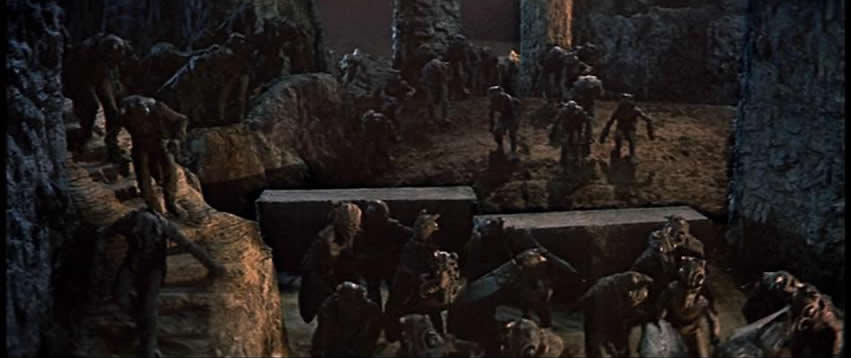 |
||
The underground cavern city of the Selenites |
||
In Star Wars, a similar portrayal of cities in space is presented. Much of the imagery is exaggerated as Lucas generally uses the visual of one city to represent all life on a particular planet. Especially in the earlier films (Episodes IV-VI), the materials and technologies utilizied in building cohere with the natural climate and resources of the planet. For example, the tree hut Ewok village on the planet Endor uses primitive wood-based structures for dwelling huts and the pedestrian bridge infrastructure. This choice in architecture also worked well with the filming techniques available at the time (1983). A combination of live sets, artificial sets, and large scale paintings were used to create the Ewok village. |
||
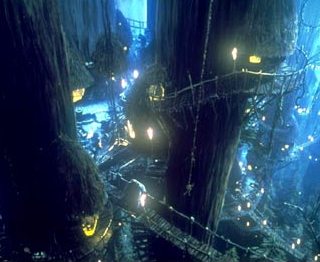 |
||
Ewok Village on Endor
|
||
In Episodes I through III, the same idea of adaptation to natural environments is maintained, however, the technologies appear improved. This is largely due to the abilities of computer generated graphics - artificial materials and geometries are more easily modeled than complex organic shapes and surfaces. For example, on the Wookiee planet of Kashyyyk, featured in Star Wars Episode III: Revenge of the Sith, the buildings inevitably look more technologically advanced and streamlined than the huts of the Ewok village. The official description and concept behind the noticeable change in architecture, and the development of new filming technologies, is explained in the "Behind the Scenes" feature at www.starwars.com: |
||
The Kashyyyk environment is a combination of filmmaking techniques to create a unique world. The concept art of Wookiee architecture described them as the "Frank Lloyd Wrights of the galaxy." Their mastery of woodwork resulted in elaborately organic and ornate designs carved directly from the enormous trees that serve as their homes. The exotic terrain of freshwater lagoons and tree-covered mountains were photographed practically as background plates gathered in China and Thailand. These were combined and enhanced in a series of digital matte paintings. The Wookiee tree cities were enormous miniatures capped with a digital canopy and synthetic denizens. The beachfront was also a miniature, populated by practical Wookiees photographed against bluescreen. |
||
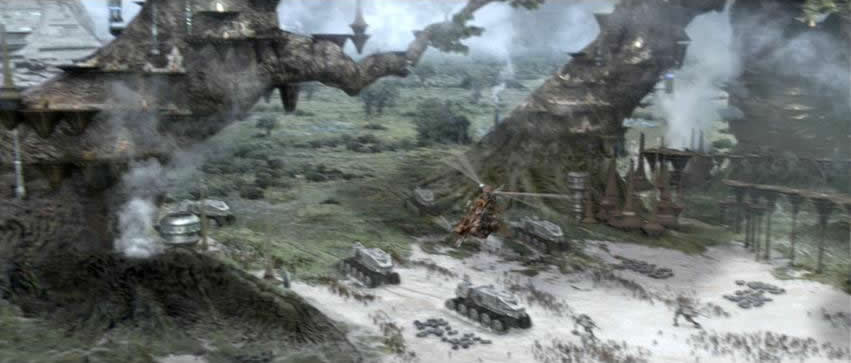 |
||
Wookiee homeworld, the jungle planet of Kashyyyk |
||
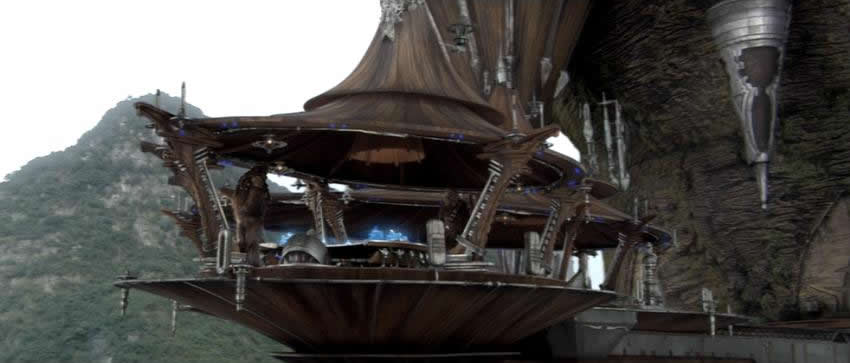 |
||
A Wookiee hut on Kashyyyk |
||
| Another example from Episode III: Revenge of the Sith, the remote planet Utapau focuses urban settlements around sinkholes with pools of water at their base. These settlements seem natural, as they are sheltered from the harsh desert surface above. Yet, their interiors in the crust of the planet are highly technologically advanced in materiality and structure. |
||
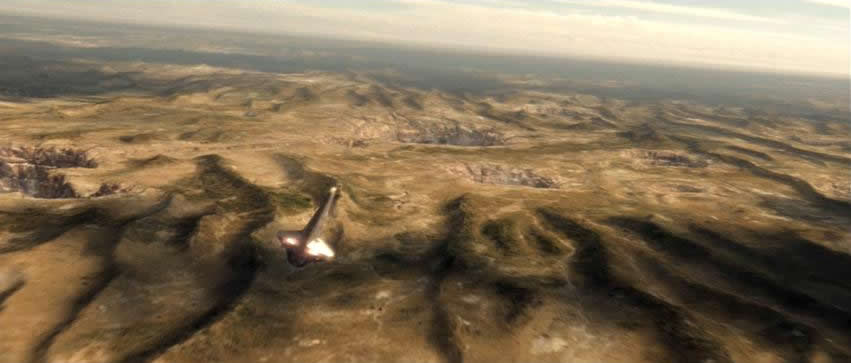 |
||
The desert surface of Utapau |
||
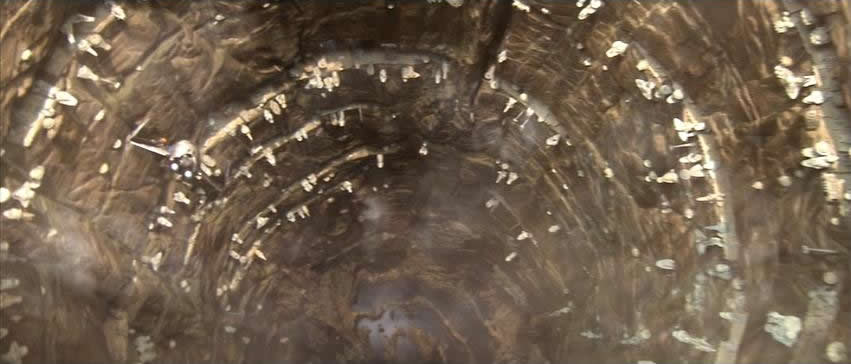 |
||
Utapau settlement concentrated around sinkhole with pool of water |
||
Finally, the architecture on the desert planet of Tatooine employs a recognizable vernacular type, the half-dome shape of the Inuit igloo. This type is efficient in energy conservation, having minimal surface area, as well as being aerodynamic, useful in a windy climate to prevent build-up of sand or snow. |
||
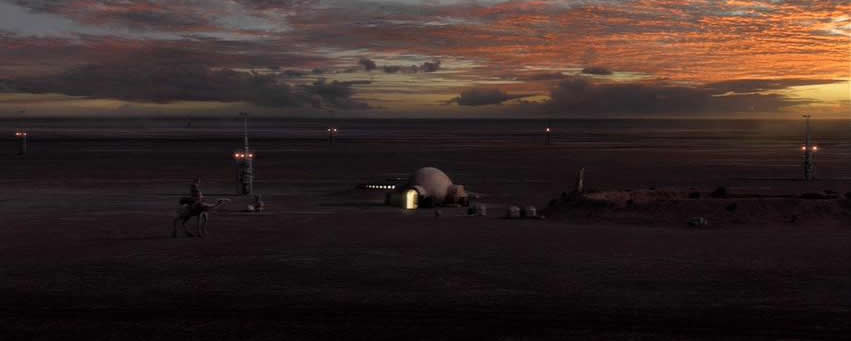 |
||
Desert planet Tatooine, home of Luke and Anakin Skywalker |
||
Return to Environments in Zero Gravity Main Page
Final Term Project - ARCH 443: Architecture and Film - Zero Gravity in Film - Fall 2005 - Emily Maemura